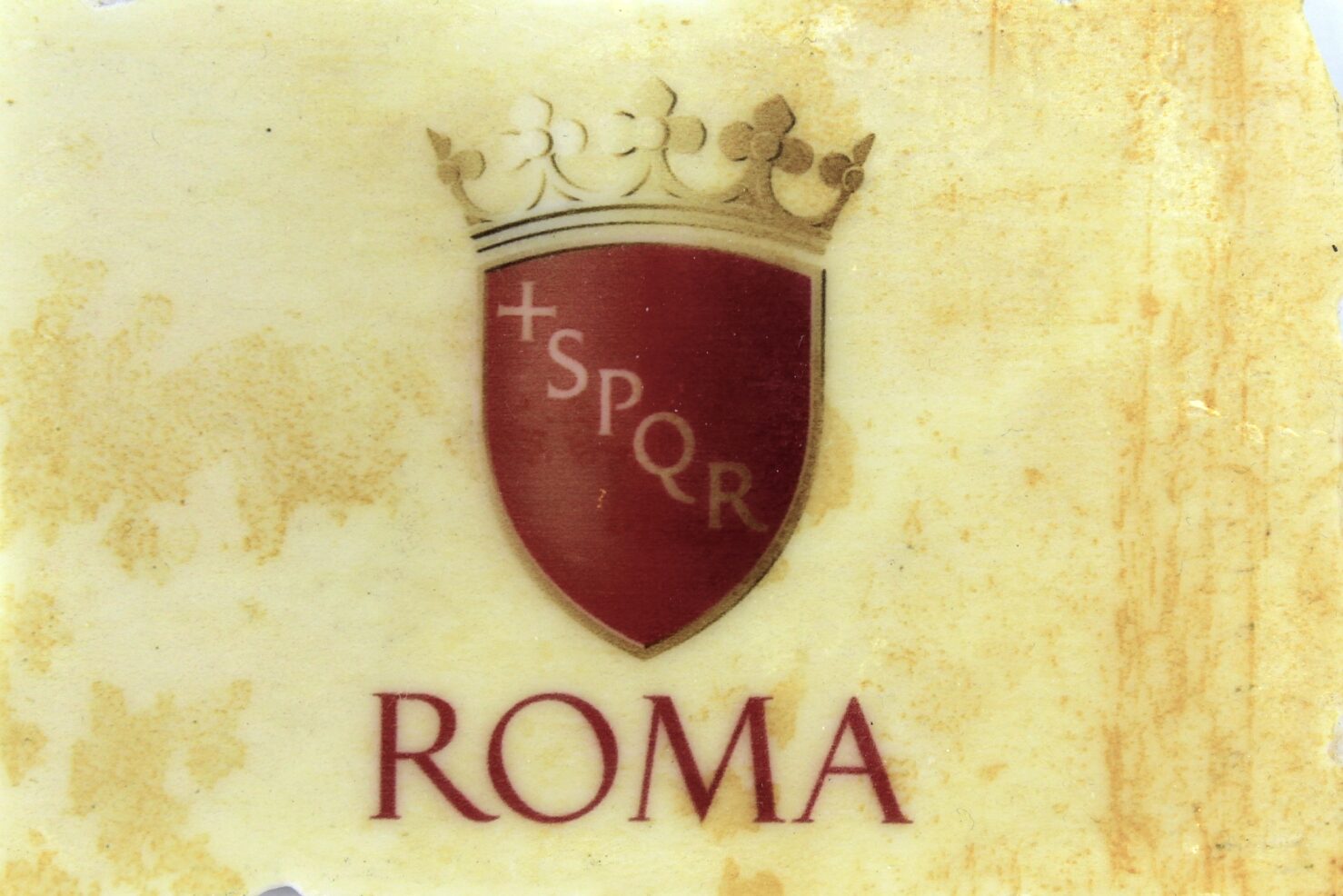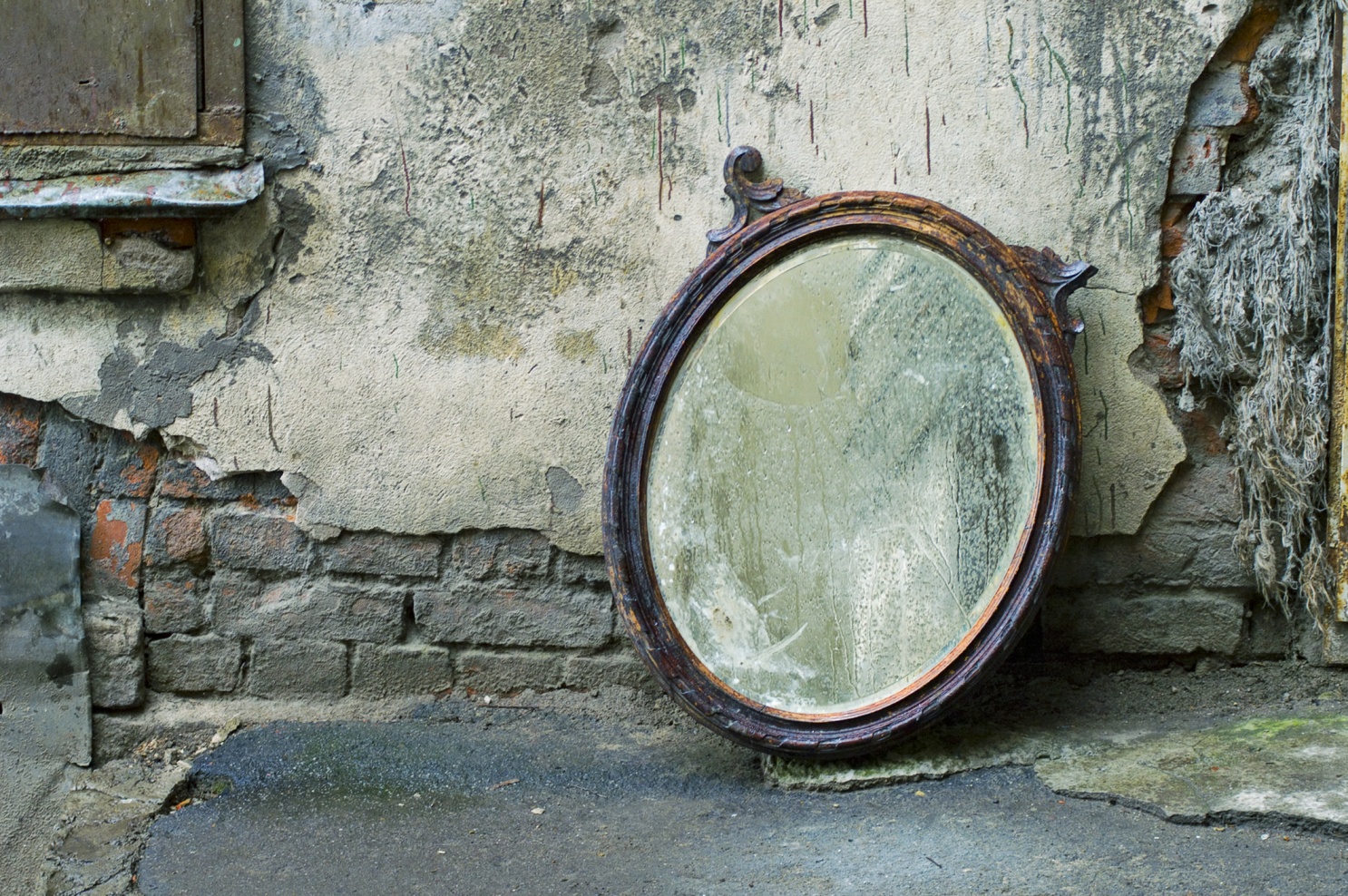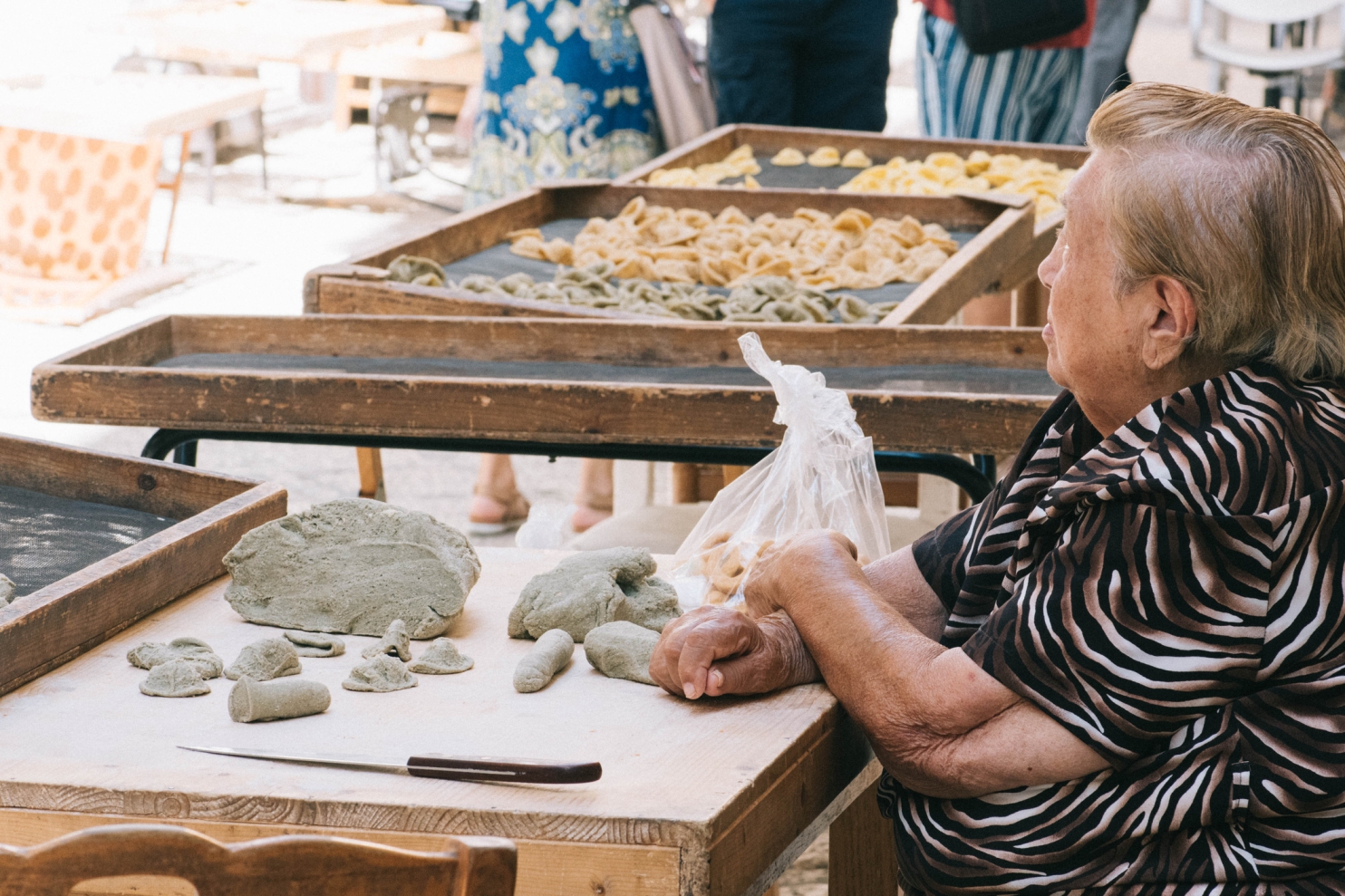Notoriously, Martin Scorsese grew up between the 40s and 50s in New York City’s “Little Italy,” where the only two options for a boy were to enter a gang or to become a priest.
As a child, he suffered from asthma and that helped him keep off the streets. Raised a fervent catholic, he didn’t become a churchman either, but rather one of the most celebrated filmmakers in the history of cinema.
Barbara De Fina, born across the Hudson River in New Jersey, shares with Martin some Sicilian blood on her father’s side. However, since her mom’s side hailed from Hungary, Barbara’s cultural and food education was a “pastiche,” until she married Scorsese in 1985.
No doubt, we can tribute to her husband and her mother-in-law, Catherine, Barbara’s acquired expertise in one of Italy’s top sources of pride, its cooking.
On the contrary, we cannot ascribe De Fina’s “imprinting” in the cinematic art to Scorsese, but rather to Sidney Lumet and, to some degree, Woody Allen.
Nonetheless, Barbara De Fina, who divorced Martin in 1991, has been involved in the production of a large number of Scorsese’s masterpieces, sharing the same storytelling philosophy.
Before passing the baton to Mrs. De Fina, I just mention here some her film credits, starting from The King of Comedy (1982) through The Last Temptation of Christ (1988), Goodfellas (1990), The Age of Innocence (1993) and Casino (1995), up to the more recent, Hugo (2011), and the latest, Silence (2016).

Film producer Barbara De Fina
How was your upbringing in an Italian-American household?
My grandfather hailed from the island of Salina in Sicily, while my grandmother was from Hungary. They lived in New Jersey just across the river from New York City, in an immigrant community where all the different nationalities mixed, unlike the Big Apple where each of them had their own neighborhood.
To add to the confusion, my mother was a war bride from London. My father has eight siblings – seven boys and one girl. Therefore, I come from a large and lively family.
I remember one Christmas party at the town hall, where we had all sorts of food from everyone’s country and danced the polka.
Needless to say, I was very confused about food until I was an early teen. It wasn’t until I married Martin that I learned about Italian food. His mother, Katie, taught me how to cook.
Did your Italian roots play any part in the choice of your career path? Was there a specific moment of realization in your life, in which you decided you would have pursued a career in the movie business?
My father, in particular, always encouraged me to follow my interest in drawing and painting. I was always engaged in sewing my own creations. As I got older, I thought I would do something in the theater, especially costumes or design.
As it would happen, when I was ready to start my career, there was no vacant job in the stage. The closest I could get was working in the office of a company that produced television commercials.
During my first or second week, there was some sort of emergency. They needed help in the studio where they were shooting a commercial for “Palmolive Dish Detergent – Madge the Manicurist.” They sent me over to help and I was totally hooked.
In 1978, you collaborated as Production Office Coordinator for Woody Allen’s Interiors. Were you excited to work with such a master? In what did your job consist?
I was very excited to work on Interiors. I had heard a lot about Woody Allen from crew members, but never had a chance to see him work. This was during his “Bergman period.”
By this time, I had advanced to running the production office with the production manager. We spent most of the movie on location on Long Island, NY. Unfortunately, it was during the winter and rather gray which, of course, was exactly what he wanted. He was quite introspective and quiet.
The most fascinating aspect was watching him work with his Director of Photography, Gordon Willis. I had worked with Gordon a few times before. He was brilliant with light but also very exacting. And the movie among other things, was about light. It had to be perfect.
It was after this movie, that I realized I wanted to get out of the office and work as production manager which involved more decision making and authority.
In 1981, you worked as Unit Manager in Prince of the City with another master, Sydney Lumet. Was there something in his way of working that impressed you?
Most of all, Sidney Lumet was very gracious and encouraging. As I was now working more on the set, I was able to watch him prepare and shoot the movie. Saying he was a master is an understatement. He would plan everything during the prep period. When he got to the set to shoot, he knew where he was putting the camera and what lens he was going to use. He had also blocked out the scene in rehearsal with the actors. He worked very quickly and hated overtime. The only aspect he left to chance was something wonderful and surprising from the actors. Prince of the City was another great learning experience.
In 1982, with The King of Comedy, you first collaborated as Unit Manager with Martin Scorsese. From then on, you have been working with him in several capacities in a large number of films – both features, shorts and music videos – up to the latest, Silence. What does inspire him and you to tell a story over another? Is “controversy” an essential element into the equation?
I did work on The King of Comedy as Unit Manager for some added photography, but was asked to stay on, as post production supervisor. Since Marty had been in post for a long time, they asked if I could help get the movie delivered.
I don’t think controversy is essential. In fact, The Last Temptation of Christ was so controversial that everyone knew about the controversy but didn’t see the movie. We made the movie to be seen and then discussed, not the other way around.
As far as the other choices, I think each project is different. You would have to look at each one in the context of when it was done and what was going on at the time. I think the one thing they all have in common is a good story and interesting, complex characters.
What could you tell us about working at Scorsese’s latest film and long-time passion project, Silence? Are you and Martin satisfied with the end result and the general reception?
I worked on Silence from 1989 through 2003. I didn’t actually get to complete the movie. It is unfortunate that such a beautiful movie wasn’t received well. Perhaps, it will be rediscovered in later years.
What projects are you working on right now?
I am finally hoping to get into production a movie I have had for several years, entitled Mississippi Mud. It is a true crime story, that takes place in the “Deep South,” about a woman’s search for the killers of her parents.
I am also very excited to have a project about the rock band Tommy James and the Shondells’ years at “Roulette Records,” which was run by the Mob. It is entitled, Me the Mob and the Music, and is a great story with wonderful music.
Martin Scorsese, come noto, è cresciuto tra gli anni Quaranta e Cinquanta nella “Little Italy” di New York City, dove le uniche due scelte per un ragazzo erano entrare in una gang o diventare prete.
Da bambino, soffriva di asma e questo l’aiutò a stare alla larga dalle strade. Cresciuto come un cattolico fervente, non divenne tuttavia un ecclesiastico, ma piuttosto uno dei registi più celebri nella storia di cinema.
Barbara De Fina, nata attorno al Fiume Hudson in New Jersey, condivide con Martin il sangue siciliano dal lato di suo padre. Tuttavia, siccome il lato di sua mamma veniva dall’Ungheria, l’educazione culturale e alimentare di Barbara è stata un “pastiche”, finché ha sposato Scorsese nel 1985. Senza dubbio, possiamo ringraziare suo marito e sua suocera, Catherine, se Barbara ha acquisito esperienza in una delle principali punte d’orgoglio italiano: la cucina.
Al contrario, non possiamo attribuire a Scorsese l’imprinting della De Fina nell’arte cinematografica, ma piuttosto a Sidney Lumet e, in qualche modo a Woody Allen.
Nondimeno, Barbara De Fina, che ha divorziato da Martin nel 1991, è stato coinvolta nella produzione di un gran numero dei capolavori di Scorsese, condividendo la stessa filosofia narrativa.
Prima di passare la parola a Mrs. De Fina, qui menziono solo alcuni dei suoi successi cinematografici, cominciando da The King of Comedy (1982), The Last Temptation of Christ (1988), Goodfellas (1990), The Age of Innocence (1993) e Casino (1995), fino al più recente, Hugo (2011), e all’ultimo, Silence (2016).

Film producer Barbara De Fina
Come è stata la sua educazione in una famiglia italo-americana?
Mio nonno veniva dall’isola di Salina in Sicilia, mentre mia nonna era ungherese. Hanno vissuto in New Jersey proprio di fronte al fiume di New York City, in una comunità di immigrati dove si mescolavano tutte le varie nazionalità, diversamente dalla Grande Mela dove ognuna di queste aveva il suo proprio quartiere. Per aumentare la confusione, mia madre è stata una sposa di guerra a Londra. Mio padre ha otto fratelli, sette ragazzi ed una ragazza. Perciò, vengo da una grande e vivace famiglia.
Ricordo una festa di Natale al municipio, dove c’era ogni genere di cibo dai vari Paesi di provenienza di ciascuno e si ballava la polka. Inutile dire, che sono stata molto confusa sul cibo fino alla prima adolescenza. Fu quando sposai Martin che ho scoperto il cibo italiano. Sua madre Katie mi insegnò a cucinare.
Le sue radici italiane hanno contribuito in qualche modo nelle scelte della sua carriera? C’è stato un momento particolare di realizzazione nella sua vita, in cui ha deciso che avrebbe intrapreso la carriera nel mondo del cinema?
Mio padre, in particolare, mi ha sempre incoraggiata a seguire il mio interesse nel disegno e nella pittura. Sono sempre stata impegnata nel cucire le mie creazioni. Quando sono cresciuta, ho pensato che avrei fatto qualche cosa nel teatro, specialmente nei costumi o nel disegno.
Ma è successo che, quando ero pronta a cominciare la mia carriera, non c’erano occasioni di lavoro in teatro. La cosa più vicina che riuscii a trovare fu di lavorare nell’ufficio di una società che produceva pubblicità televisive. Durante la mia prima o seconda settimana, ci fu una specie di emergenza. Ebbero bisogno di aiuto nello studio dove stavano girando una pubblicità per “Palmolive Detersivo per piatti – Madge la manicure.” Mi mandarono ad aiutare ed io ne fui presa totalmente.
Nel 1978 lei collaborò come coordinatore dell’ufficio di produzione per Interiors di Woody Allen. E’ stato emozionante lavorare con un simile maestro? In cosa è consistito il suo lavoro?
Lavorare per Interiors fu molto emozionante. Avevo sentito parlare molto di Woody Allen dai membri dello staff ma mai avevo avuto l’opportunità di vederlo lavorare. Questo è stato durante il suo “periodo Bergman”.
Allora, ero arrivata a gestire l’ufficio di produzione con il direttore di produzione. Passammo la maggior parte del film sul set a Long Island, NY. Sfortunatamente, avvenne durante l’inverno e fu piuttosto grigio cosa che, chiaramente, era esattamente quello che lui voleva. Fu piuttosto introspettivo e riservato.
L’aspetto più affascinante è stato guardarlo lavorare con il suo direttore della fotografia, Gordon Willis. Io avevo già lavorato con Gordon altre volte. Era brillante con le luci ma anche molto esigente. Ed il film, fra le altre cose, era relativo alla luce. Doveva essere perfetto.
E’ stato dopo questo film, che ho capito che volevo lasciare l’ufficio e lavorare come direttore di produzione, incarico che comporta più decisioni da prendere e autorità.
Nel 1981, lavorò come direttore di unità in Prince of the City con un altro grande, Sydney Lumet. C’è stata qualche cosa nel suo modo di lavorare che la entusiasmò?
Sidney Lumet era soprattutto molto gentile ed incoraggiante. Poiché allora stavo lavorando di più sul set, ebbi la possibilità di guardarlo preparare e girare il film. Dire che lui è un maestro è minimizzare. Lui progettava tutto durante il periodo di preparazione. Quando arrivava sul set per girare, sapeva dove mettere la macchina da presa e quale lente usare. Aveva anche stabilito la scena nelle prove con gli attori. Lavorava molto rapidamente e odiava gli straordinari. L’unico aspetto che lasciava al caso era qualche cosa di meraviglioso e sorprendente che potevano fare gli attori. Prince of the City è stata un’altra grande esperienza di apprendimento.
Nel 1982, con The King of Comedy, ha collaborato per la prima volta con Martin Scorsese come direttore di unità. Da allora in poi, ha lavorato con lui con molte competenze in un gran numero di film – sia lungometraggi, sia corti che video musicali – fino all’ultimo, Silence. Cosa inspira lui e cosa lei nel raccontare una storia dopo l’altra? La “polemica” è un elemento essenziale per l’equazione?
Lavorai a The King of Comedy come direttore di unità per la fotografia aggiuntiva, ma mi si chiese di continuare come supervisore della post produzione. Siccome Marty aveva lavorato per molto tempo in post produzione, mi chiesero se potevo aiutare a consegnare il film.
Non penso che la polemica sia essenziale. Infatti, The Last Temptation of Christ è stato così discusso che tutti sanno della polemica ma non hanno visto il film. Noi abbiamo girato il film perché prima fosse visto e poi discusso, non il contrario.
Per quanto riguarda altre scelte, penso che ogni progetto sia diverso. Bisognerebbe guardare ciascuno nel contesto in cui è stato fatto e quello che succedeva in quel periodo. Penso che l’unica cosa che hanno tutti in comune sia una buona storia e personaggi interessanti, complessi.
Cosa può dirci del lavoro nell’ultimo film di Scorsese e del progetto a lungo desiderato, Silence? Lei e Martin siete soddisfatti del risultato finale e di come è stato ricevuto dal pubblico in generale?
Ho lavorato a Silence dal 1989 fino al 2003. Non sono riuscita davvero a completare il film. È un peccato che un simile bel film non sia stato ben accolto. Sarà riscoperto più tardi forse, nei prossimi anni.
Su quali progetti sta lavorando adesso?
Spero finalmente di ottenere la produzione di un film che ho da molti anni, intitolato Mississippi Mud. È una storia criminale vera che ha luogo nel “Profondo Sud” sulla ricerca da parte di una donna degli assassini dei suoi genitori.
Sono anche molto entusiasta di avere un progetto sul complesso rock di Tommy James e degli anni degli Shondells’ alla “Roulette Records,” che fu gestita da Mob. E’ intitolato Me the Mob and the Music, ed è una grande storia con una musica meravigliosa.






























